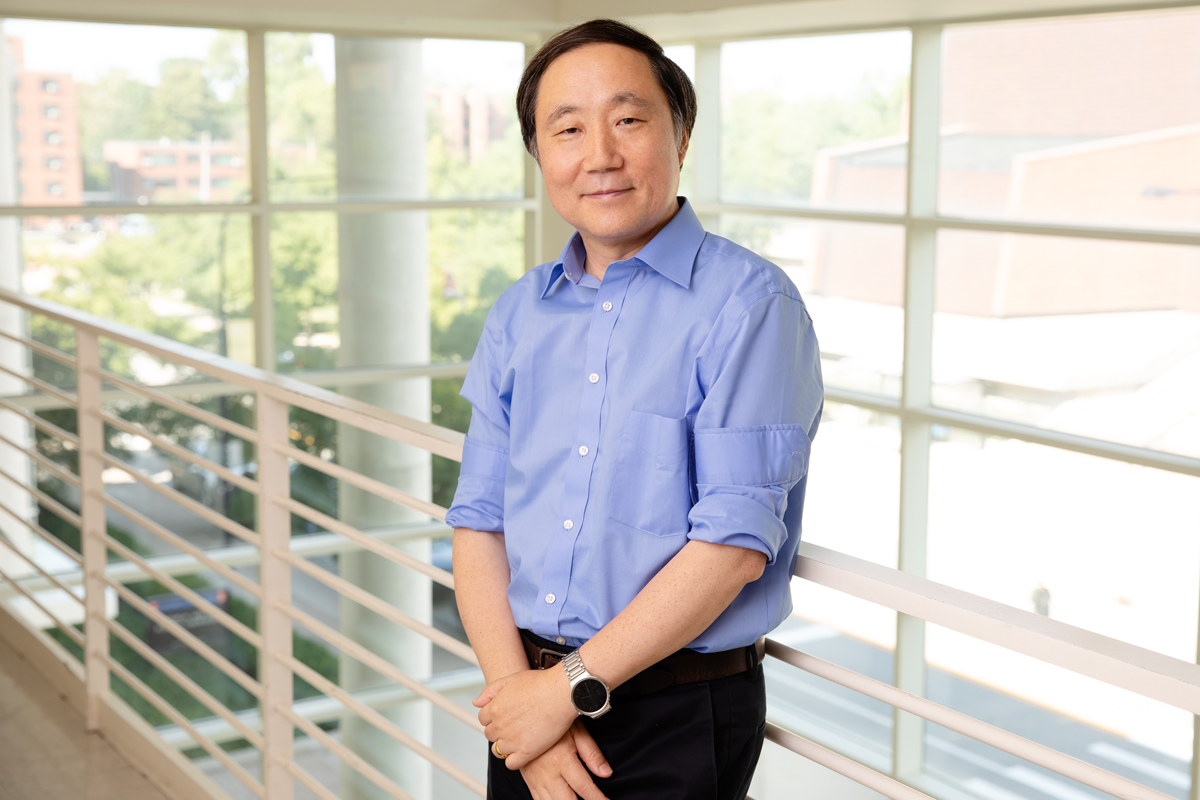DNAzymes could outperform protein enzymes for genetic engineering
Move over, gene-editing proteins – there’s a smaller, cheaper, more specific genetic engineering tool on the block: DNAzymes – small DNA molecules that can function like protein enzymes.
Researchers at Illinois have developed a technique that, for the first time, allows DNAzymes to target and cut double-stranded DNA, overcoming a significant limitation of the technology. DNAzymes have been used in biosensing, DNA computing and many other applications. However, when it comes to genetic engineering applications such as gene editing or gene therapy, they have faced a challenge: DNAzymes have only been able to target sites on single-stranded DNA, while the DNA coding for genes in cells is double-stranded. The researchers published their new technique in the Journal of the American Chemical Society.

“DNAzymes have many advantages, including higher stability, smaller size and lower cost than protein enzymes. These advantages perfectly fit the requirement for genetic engineering tools,” said study leader Yi Lu (BSD/CABBI/CGD), a professor of chemistry at Illinois. “No DNAzymes could alter double-stranded DNA until this work. By making that happen, we open the door for DNAzymes to enter the entire world of genetic engineering.”
In double-stranded DNA, the two strands are specifically paired together with complementary sequences. To make it possible for DNAzymes to cut the double-stranded DNA, the Illinois team developed a technique that pairs DNAzymes with helper molecules called peptide nucleic acids.
“PNA is a very strong DNA binder, strong enough to bind to one strand of the double-stranded DNA even though all of the bases are already paired with the other strand,” said Mingkuan Lyu, a graduate student and the first author of the paper. “Once this process happens, one strand of the double-stranded DNA will be occupied by PNA, and the other strand will be exposed as single-stranded DNA, available for the DNAzyme to interact.”
The team first demonstrated the technique, called PNA-assisted double-stranded DNA nicking by DNAzymes, or PANDA, on a synthetic testing sequence to prove it worked to cut one or both strands of a double-stranded DNA target. They also tested PANDA’s ability to distinguish a specific target sequence from similar sequences. This is important, the researchers said, as unintended off-target activity is one of the challenges that has limited the clinical applications of protein-based gene editing techniques, such as CRISPR.
“In CRISPR-Cas9, the guide RNA is responsible for customized target recognition, but in PANDA, both the DNAzyme and the PNA are. Therefore, there is an inherent ‘double-check’ mechanism in PANDA, making it more stringent in target specificity,” Lyu said. “We tested the specificity by mutating only one base within the target. It turned out that under most cases, PANDA can recognize this tiny change and refuse to cut the incorrect target.”
Another advantage of PANDA is its small size – the PNA and DNAzyme together are about five times smaller than the CRISPR-Cas9 complex, Lu said – allowing it to access crowded sites within a chromosome’s tightly-packed DNA that a large protein could not reach.
Next, the researchers plan to investigate the PANDA system’s performance targeting genes of interest in living cells. They also plan to expand the catalog of genes that the PANDA system can target.
“The targeting sequences can be readily changed and customized for specific applications,” Lu said. “Therefore the PANDA system can serve as a novel alternative tool for a wide range of genetic engineering and other biochemical and biotechnological applications.”
Center for Advanced Bioenergy and Bioproducts Innovation (CABBI), the National Institutes of Health and the Chemistry Discovery Fund at the University of Illinois supported this work. Lu is affiliated with the Beckman Institute for Advanced Science and Technology and the Materials Research Laboratory at Illinois.
